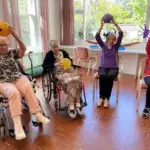Getting diagnosed with autism as an adult can feel like someone finally handed you the manual to your own brain… except they ripped out the first few chapters and scribbled some confusing notes in the margins. You’ve lived an entire life navigating social rules that didn’t make sense, feeling out of sync, maybe even thinking something was wrong with you. Now, you’re sitting with a label that explains a lot but doesn’t come with a step-by-step roadmap. So where do you go from here?
Some adults feel relief when the diagnosis lands—like everything clicks into place. Others feel grief, anger, or a strange mix of both. It’s normal to need time to recalibrate. But once the emotional dust starts to settle, many find themselves standing at a crossroads, unsure what support is even available, or what’s worth pursuing. The truth? There’s no one-size-fits-all after diagnosis. But there are places to go, people to talk to, and ways to make your life feel a little more like it finally fits.
Getting Comfortable With the Language of Autism
First things first, there’s a whole vocabulary around autism you may not be familiar with—or maybe you’ve only heard it tossed around in academic articles or Twitter threads. Terms like “neurodivergent,” “masking,” “stimming,” “sensory overwhelm,” and “spiky profile” aren’t just buzzwords. They describe real patterns and behaviors that probably apply to you, even if you didn’t have the words for them before. Getting fluent in this language isn’t about labeling every move you make. It’s about making sense of how you tick and connecting with others who see the world in similar ways.
It can be validating to learn that the things you’ve always done—like needing noise-canceling headphones in a grocery store, struggling with eye contact, or scripting phone conversations—aren’t weird. They’re ways your nervous system copes and communicates. They’re adaptive. And now, you can stop beating yourself up for them.
Reading first-person accounts from other autistic adults helps, especially ones that don’t sanitize the experience or turn it into an inspirational soundbite. Podcasts, books, blogs, or even Reddit threads can be a goldmine of insight, not advice you have to take, just shared experiences that might reflect pieces of your own. You’ll start to notice patterns—people who always felt too sensitive, too intense, too “much”—and realize maybe you were just never in the right environment to thrive.
Finding Providers Who Actually Get It
So now you’ve got a diagnosis. Maybe it came from a psychologist, maybe a psychiatrist, maybe someone else entirely. Either way, not every provider understands autism in adults—especially those who were socialized and masked their way through decades of life. That means you’ll need to vet the professionals you seek support from, because not all of them are equipped to meet you where you are.
Some clinicians still cling to outdated checklists based on how autism presents in young boys. That’s not helpful when you’re a grown woman who has a meltdown once a month over clothes that don’t feel right but still managed to keep a full-time job. You’ll want therapists, psychiatrists, or coaches who understand that autism looks different in adults and isn’t always visible. Look for providers with experience in neurodivergent care—not just the buzzwords on their site, but actual lived or clinical knowledge that goes beyond surface-level training.
Occupational therapy isn’t just for kids, by the way. Adult OTs trained in sensory integration can help you figure out how to move through a world that wasn’t built with your brain in mind. They can help you adjust your work environment, explore tools to regulate sensory overload, and build a day-to-day routine that doesn’t leave you running on fumes. That matters, especially if you’ve spent years pretending to be someone you’re not just to survive a workday.
Understanding Your Rights at Work and School
Workplaces and academic environments tend to operate with an assumed default. You’re expected to sit still, make eye contact, socialize a certain way, respond to emails fast, and stay productive without needing extra time or space. For neurotypical folks, that’s just “normal.” But for many autistic adults, that baseline can be exhausting or flat-out inaccessible.
Getting diagnosed opens the door to protections under the ADA. That doesn’t mean you have to disclose your diagnosis to your boss or professor if you’re not comfortable, but you can request accommodations that make your life easier. We’re talking flexible hours, noise-reducing headphones, written instructions instead of verbal, breaks during meetings, task management software, even remote work options.
You’re not asking for favors. These are legal rights designed to level the playing field, and employers are obligated to work with you. If you’re not sure where to start, disability advocates or HR reps (the good ones, anyway) can help you navigate the conversation.
Autistic adults often assume they’re just bad at work or lazy students because they’ve been quietly drowning for years. But the moment you stop holding yourself to neurotypical standards, everything shifts. That’s especially true in companies that are actively working to include employees with disabilities. These environments exist, but you might have to seek them out with intention. The more vocal you are about what you need, the better chance you have of building a work life that’s sustainable and actually fulfilling.
Connecting With the Right Community
There’s something deeply healing about being in a room—or a virtual space—where you don’t have to explain yourself. Where you can flap your hands, take a long pause before responding, or say “I need a break” without anyone blinking. Whether you’re craving friendship, mentorship, or just want to know you’re not alone, community can be a game-changer after diagnosis.
That doesn’t always mean a traditional support group, though those can be helpful. When the space is specific, the conversation tends to feel more real, less like a clinical rundown and more like a mutual exhale.
Therapy groups that specialize in neurodivergence are another good option. For example, Neurish Wellness in Newport Beach, California is known for creating environments where autistic adults can process both the grief and the growth that often come with a diagnosis. They prioritize not just coping strategies, but identity work and relational healing. That kind of support can make the difference between understanding your diagnosis and truly living into it.
Just be wary of toxic positivity or spaces that feel performative. Not every autism group will feel right, and that’s okay. The best litmus test is how your body feels when you leave—lighter, heavier, calmer, more confused. Trust that instinct.
Making Peace With the Past, and Moving Forward
After an autism diagnosis, it’s tempting to go back and rewrite every chapter of your life. You might find yourself obsessing over old report cards, awkward memories, relationship patterns, or career missteps. It’s all part of the integration process. You’re not trying to erase your past, you’re just learning how to view it through a different lens.
Some people feel grief for what could’ve been—if they’d only known sooner, if they’d gotten help earlier, if they hadn’t spent decades faking their way through. Others feel vindicated. Many feel both, and the pendulum can swing back and forth for months or even years. There’s no timeline for sorting through this. But the more you understand yourself, the less you feel like a walking mystery or a problem that needs fixing.
Relationships shift, too. Some friends or family might not get it. They might minimize your diagnosis or question whether it really applies. That can sting. But you’re allowed to draw boundaries. You’re allowed to distance yourself from people who aren’t safe or supportive. And you’re allowed to build new relationships that do see you fully.
You might find your sensory preferences get more specific, your social tolerance more selective, your routines more defined. That’s not regression. That’s clarity. You’re no longer guessing what works for you—you’re listening to your body, your brain, your needs. And that’s not only okay, it’s progress.
There’s no straight line from diagnosis to healing. No checklist that will magically make life easier. But there is relief in understanding. There’s peace in unmasking. And there’s power in finally knowing that the way your brain works isn’t wrong—it’s just different. The road ahead might feel foggy at first, but you’re not starting from scratch. You’re starting with hard-earned insight, and that’s more than most people get in a lifetime.




